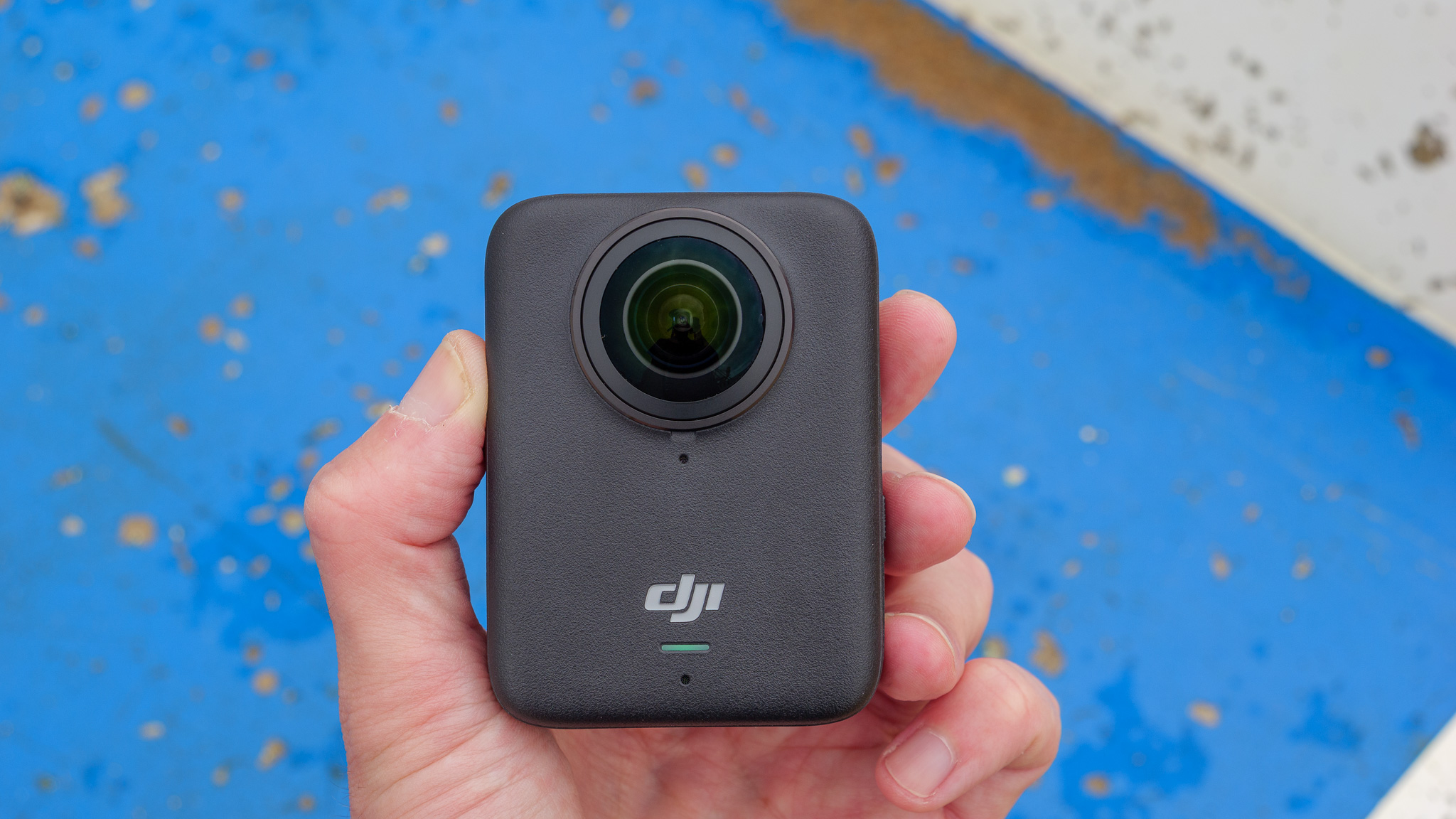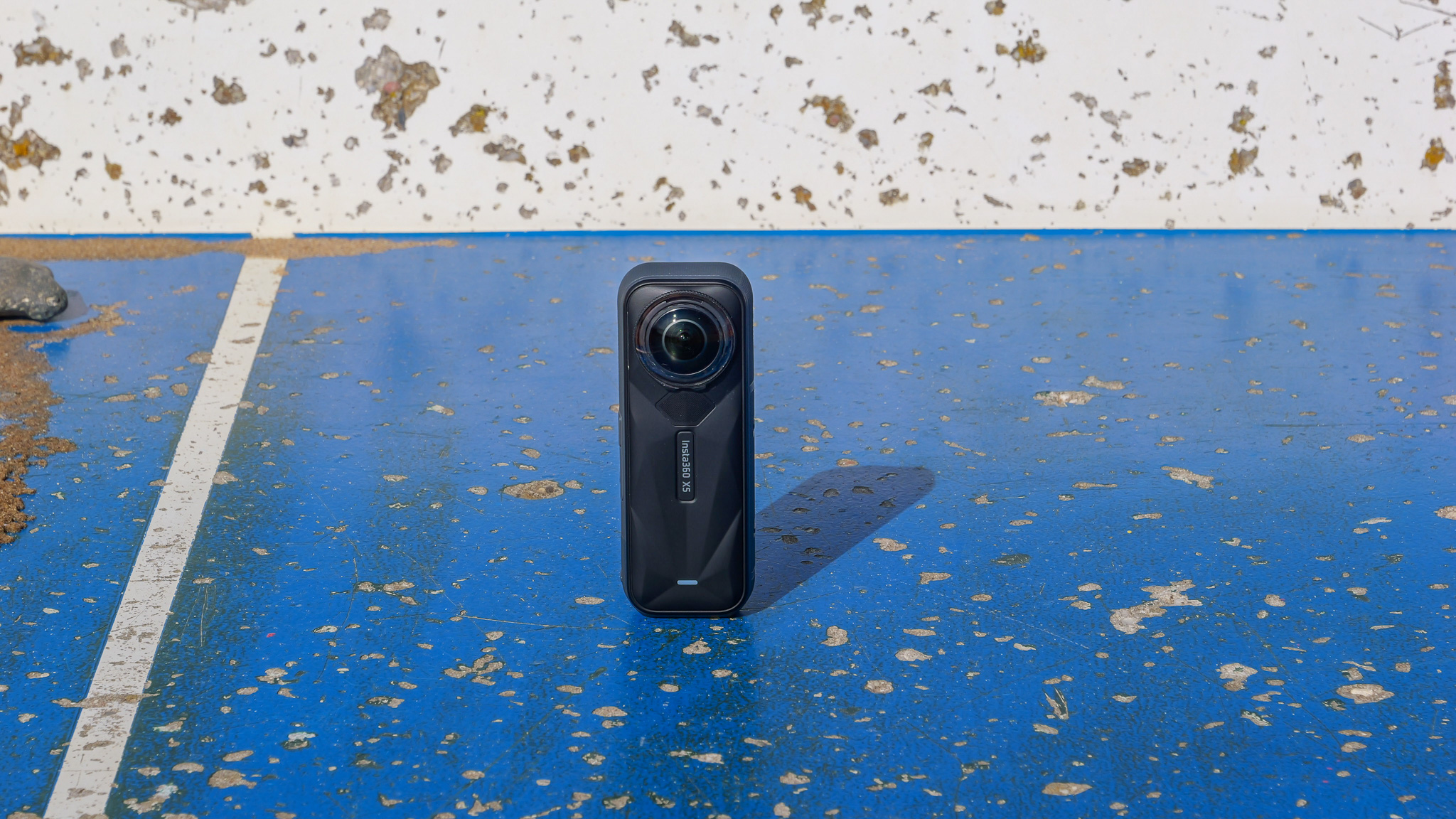DJI Osmo 360 vs Insta360 X5: the premium 360 cameras battle it out in a hands-on test
Can DJI's high-spec newcomer topple our top-rated 360 action camera?

The battle for 360-degree supremacy is heating up, and two heavyweights are squaring off in the battle to be the best 360 camera: the DJI Osmo 360 and the Insta360 X5.
Each of these 8K 360 cameras promises jaw-dropping immersive footage, smart stabilization, and pro-grade editing features, and you can read our in-depth verdicts on both in our DJI Osmo 360 review and Insta360 X5 review – but which of them truly deserves a spot in your gear bag?
DJI's entry – its 360 camera debut, no less – brings the company’s signature engineering and image-quality finesse, while Insta360 pushes boundaries with bold features and software integration.
On paper, it’s a close match, but when you dig into real-world design, usability and raw performance, distinct differences between the two cameras start to show.
Whether you're a content creator chasing more cinematic shots, or a hobbyist capturing your adventures, you’ll want to know how the two stack up where it counts. I’ve had the chance to test them head to head in the real world – here’s what I found.
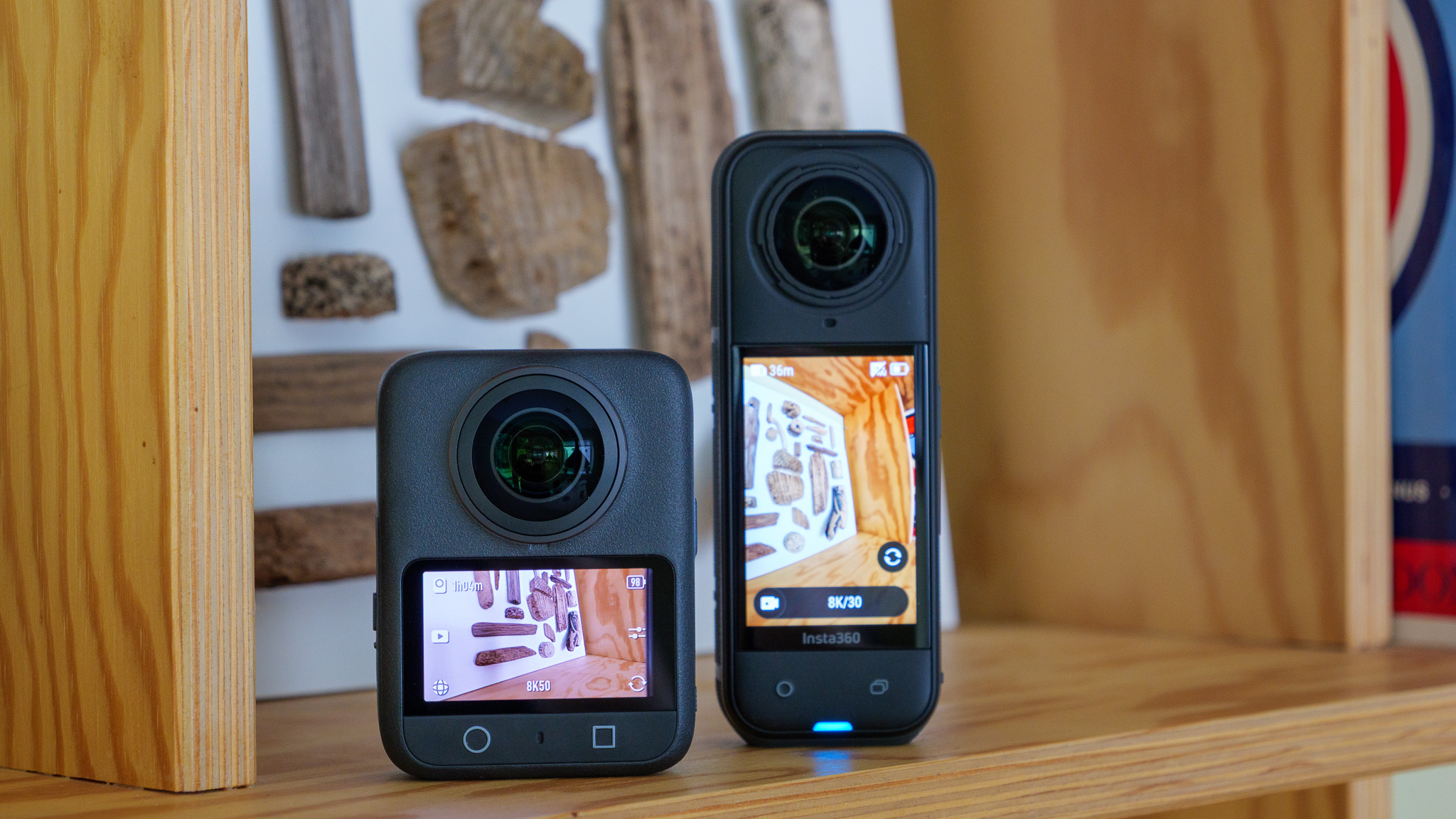
1. DJI Osmo 360 vs Insta360 X5: Build quality and ruggedness
- Both cameras are IP68-rated
- DJI Osmo 360 weighs 184g, Insta360 X5 weighs 200g
Both cameras are lightweight, comfortably pocket-sized, dark grey, and fairly austere in their looks. Each has a small touchscreen, three physical buttons, tripod and magnetic mounting options on the bottom, and the bulbous twin-lens arrangement that marks them out as 360 cameras. So far, so similar. In fact, the only clear difference at first glance is the shape: the Osmo 360 is squatter and squarer than the candy bar-shaped X5.
Both are also IP68-rated, meaning they're protected against dust and immersion in fresh water over a meter deep. You’d think this would make them similarly rugged, but they aren’t – the Osmo 360 is water-resistant to 10m, the X5 to 15m. And while the X5 is designed with underwater use in mind, DJI advises against using the Osmo 360 for sub-aqua 360 video capture due to technical issues.
Sign up for breaking news, reviews, opinion, top tech deals, and more.
The real differentiator for me, though, is the fact that while the Insta360 X5 supports cheap and simple user-replaceable lenses, the DJI Osmo 360 doesn’t. This means that if you scratch or shatter a lens (easily done with a 360 camera, as the fisheye lenses poke out) on the Osmo 360 you'll need to replace the whole camera. With the X5, it’s far less of an issue.
You can, however, buy lens protectors for both cameras that will help prevent damage – but they feel like more of an essential purchase for the Osmo 360.
- Ruggedness winner: Insta360 X5
2. DJI Osmo 360 vs Insta360 X5: Performance and usability
- Osmo 360 has built-in storage while X5 relies solely on microSD card
- Osmo 360 has 2-inch touchscreen, X5 has 2.5-inch tall touchscreen
- Real-world tests show that battery life is roughly the same on both cameras
On the connectivity front, both cameras support fast data transfer via USB-C 3.0, but the Osmo 360 edges wireless transfer speed thanks to having Wi-Fi 6 versus the X5’s Wi-Fi 5. In practice, I didn’t notice much difference in speed, but if you’re pressed for time the Osmo 360 will suit you a little better.
Moving on to battery life, I assumed the X5’s 2,400mAh-capacity battery would comfortably outperform the Osmo 360’s, which is 1910mAh, but in practice I found almost no difference between the two. I set both cameras to their power-saving Endurance modes and 8K 30fps 360 video recording, and left them running to see how long they lasted.
Both filled up their available storage before shutting down. The Osmo 360 recorded around 100 minutes of footage before it was full, leaving it with 16% of its battery power. The X5 recorded 105 minutes of video and was left with 11%. So, in their power-saving modes at least, there’s barely anything between them.
Both cameras have simple but very usable touchscreen interfaces, with swiping from different screen edges opening different menus. There’s nothing between the two in terms of UX and operation, so I can’t call either one the winner here – both do things very well.
Storage-wise the Osmo 360 has a real edge thanks to its 128GB of built-in capacity, around 105GB of which is usable for footage and photos, and which can be bolstered by a microSD card up to 1TB.
The X5 has no built-in storage, so you’ll need a microSD card to record anything (it also supports cards up to 1TB). The built-in storage might seem like a small thing, but it meant I could start shooting with the Osmo 360 right out of the box.
- Performance and usability winner: DJI Osmo 360
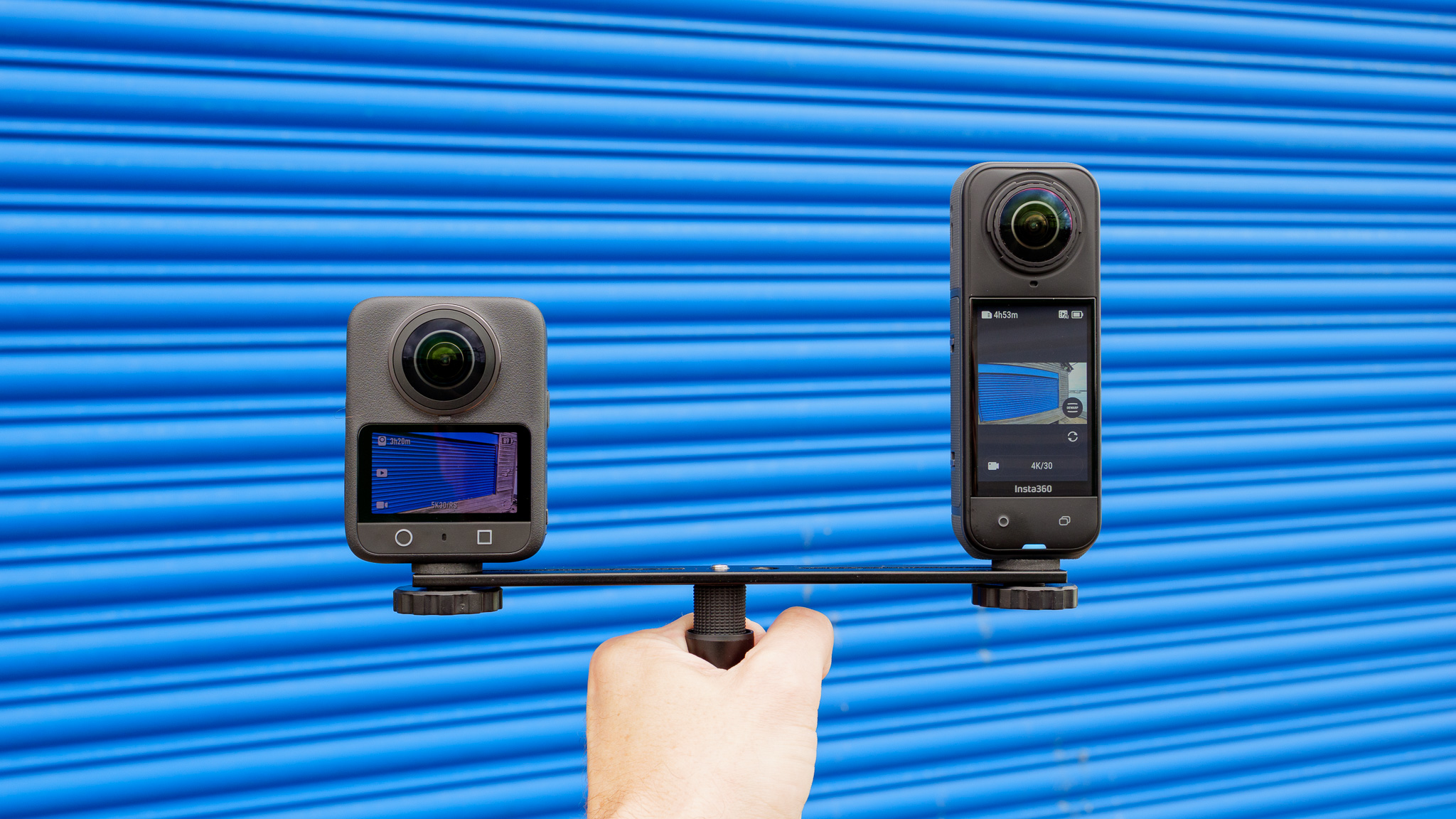
3. DJI Osmo 360 vs Insta360 X5: Image quality
- DJI Osmo 360 has 1/1.1-inch sensor with 2.4μm pixels, supporting 10-bit video
- Insta360 X5 has 1/1.28-inch sensor with 1.2μm pixels, supporting 8-bit video
On paper, the DJI Osmo 360 should handily beat the Insta360 X5 for image quality. The Osmo 360 has larger sensors with larger pixels, making it the more sensitive of the two cameras, and supports 10-bit video, while the X5 only goes to 8-bit. The Osmo 360 also supports a higher frame rate for 360 video: up to 50fps as opposed to 30fps on the X5.
In real-world tests, however, I found that the two cameras deliver very similar results. The most fastidious of pixel peepers may disagree, but looking at video clips captured in identical conditions I can’t really see anything that suggests the Osmo 360 has the beating of its rival. In fact, I find the X5’s low-light footage more appealing and punchier than the Osmo 360’s – although that may be more of a personal preference.
Both cameras support log video capture, however, and skilled color graders might appreciate the higher bit rate of the Osmo 360's video when processing things in post. For those who just want to use the video straight out of the camera, like me (and I suspect most users), though, I found little to differentiate between the two.
- Image-quality winner: Draw
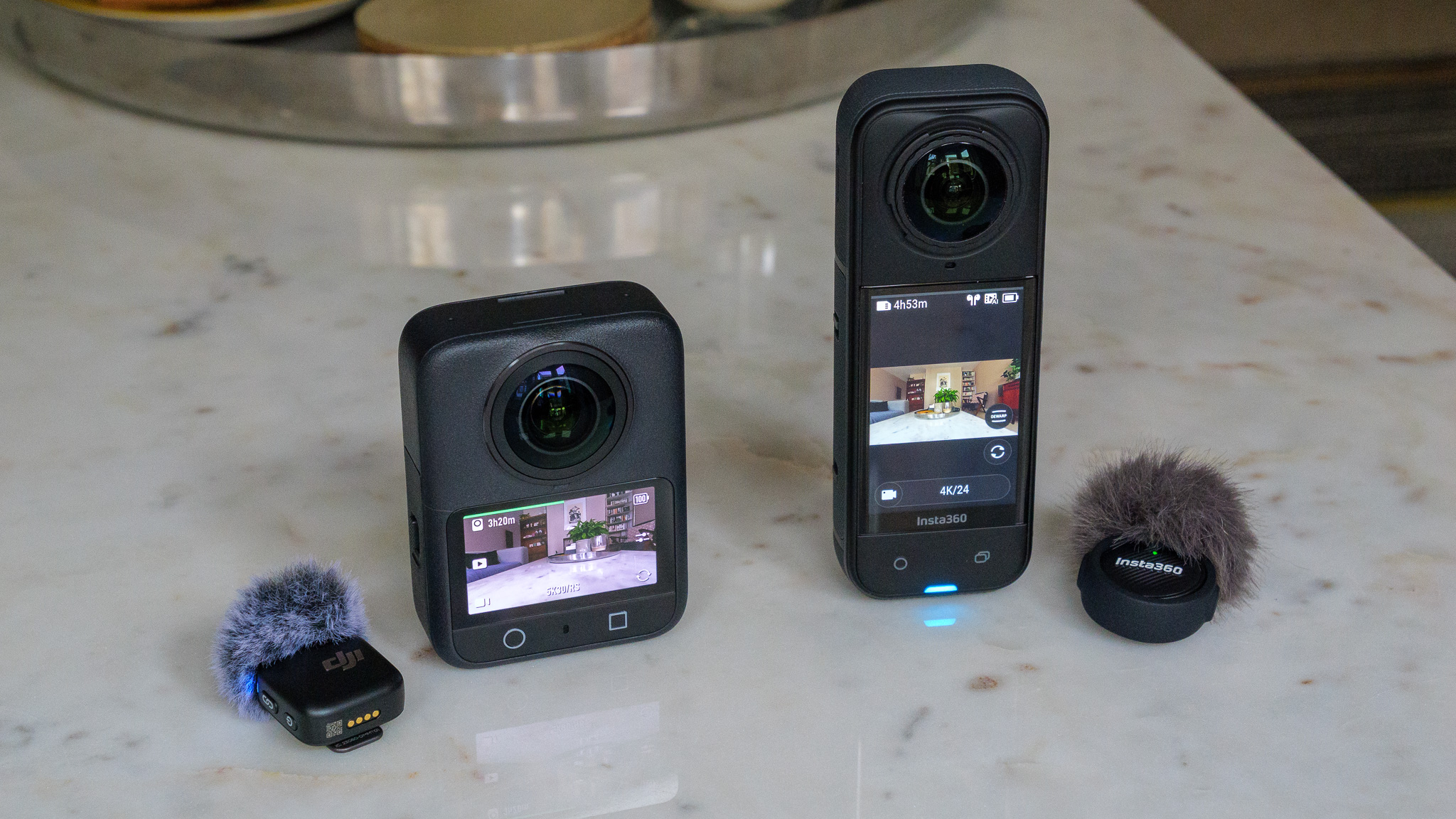
4. DJI Osmo 360 vs Insta360 X5: Sound quality
- DJI Osmo 360 has four built-in mics, Insta360 X5 has two
- Both cameras record audio at 48kHz / 16-bit quality in AAC format
- Both cameras are compatible with first-party wireless mics
When using their internal microphones, both cameras record audio at 16-bit quality, and both include a selection of modes for 'improving' the quality of audio captured. In reality, any user demanding excellent audio quality outdoors is going to have to use an external audio source, because both cameras' built-in mics are highly susceptible to picking up wind noise.
I tested their wind-reduction modes in the video below, and as you can hear, neither camera can really deal with a blustery day on the coast adequately. I think the DJI Osmo 360 ever so slightly edges it, though.
The good news is that, as I mention in the video, both are compatible with external wireless mics, enabling much better audio capture. The Insta360 X5 works with the company's own Insta360 Mic Air, which I recently reviewed and found to be excellent for its price, while the DJI Osmo 360 can be used with the DJI Mic Mini or DJI Mic 2, both of which offer superb 24-bit capture.
Whichever camera you buy, I'd highly recommend you get a wireless mic if you intent to use it for vlogging or outdoor use.
- Sound-quality winner: DJI Osmo 360
5. DJI Osmo 360 vs Insta360 X5: Companion apps
- Both cameras have mobile and desktop apps with rich editing tools
- Insta360 mobile app has slightly better AI-assisted editing tools
For most people, the real selling point of 360 cameras is that they allow for post-shoot reframing of the image. That requires an editing app that’s compatible with the 360 video format, and which includes the tools for trimming footage, setting view angles, tracking subjects, adjusting fields of view and more. Both DJI and Insta360 offer such apps, both for desktop and mobile.
Insta360 has a lot more experience in this area, of course, having been in the 360 camera game for some years now. Its Insta360 mobile app and Insta360 Studio desktop app are robust, easy to use, and quick to master. I found the mobile app’s AI-assisted editing particularly impressive at turning out short videos with interesting highlights, transitions and background music – you just feed it a few clips and it does the rest, and it’s ideal when you don’t have time to manually edit a video (although manual edits are still the way to go if you need things to look as tight and professional as possible).
DJI, a newcomer to 360 cameras, uses its existing Mimo mobile app for 360 edits. Its manual editing capabilities are roughly the same as the Insta360 app’s, but its auto editing function, while outwardly similar, isn’t quite as dependable, at least not yet – I suspect it’ll improve over time as updates to the app are released. The DJI Studio desktop app, meanwhile, may be new, but I found it a joy to use, and I had no issues using it to edit videos, add music and export good-looking results.
- Companion apps winner: Insta360 X5
DJI Osmo 360 vs Insta360 X5: Early verdict
We've reviewed the DJI Osmo 360 vs Insta360 X5 in-depth separately, and each is a very capable product that's well worth its purchase price. I can't say you'll be disappointed, whichever camera you choose.
That's not why you're reading this article, though, is it? What you want to know is which of the two is the superior 360 camera. Is the Insta360 X5 still the brightest and best in the business, or does the upstart DJI Osmo 360 steal its crown by virtue of its bumper-sized image sensors?
The truth, unfortunately, isn't as simple as that. I think the Insta360 X5 is a tough camera to beat on the image quality front, despite the specs being in the DJI Osmo 360's favor. Its mobile app is slightly better when it comes to AI-powered auto-editing too.
The X5 is also clearly the more rugged and adventure-ready of the pair, mainly thanks to its easy-to-replace lenses. The Osmo 360 needs to be handled with a lot more care, and that's not a great thing if you're into extreme sports (or want to film 360 footage underwater, which DJI doesn't want you to attempt).
On the other hand, I love the Osmo 360's built-in storage, and having compatibility with the DJI Mic Mini and Mic 2 (plus the same batteries as the Osmo Action 5 Pro) means those already invested in the DJI ecosystem have good reason to pick it over the X5.
In other areas, like battery life and user-friendliness, there's less than a cigarette paper between the two. Like I said, these are both excellent cameras, and neither will let you down on the 360 video front – but if I was an Insta360 X5 owner I wouldn't be swapping it out for an Osmo 360 right now, large sensor or not.
You might also like

Sam has been writing about tech and digital culture for over 20 years, starting off in video games journalism before branching out into the wonderful worlds of consumer electronics, streaming entertainment and photography. Over the years he has written for Wired, Stuff, GQ, T3, Trusted Reviews and PC Zone, and now lives on the Kent coast in the UK – the ideal place for a camera reviewer to ply their trade.
You must confirm your public display name before commenting
Please logout and then login again, you will then be prompted to enter your display name.
